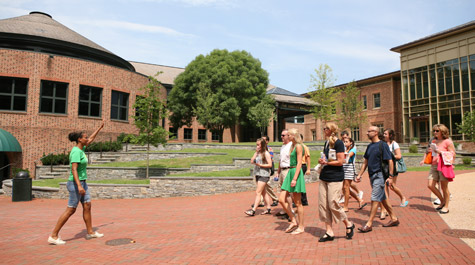If you have been anywhere on campus here at the College of William and Mary, you may have noticed the random holes created by missing bricks in the sidewalks. If you are like me, you may have thought that wear and tear — perhaps from deterioration simply due to storms and golf carts, or maybe even the standard bicycle and pedestrian traffic — caused the bricks to become loose. Over time you may come to realize, like me, that loose bricks do not just get up and walk out of the pavement, and someone must have taken them. Maybe at first, in a state of denial, you will try to explain away the issue, saying that staff here at the College remove the loosest bricks so they can replace them later, or maybe even that particularly brave and buff squirrels are the real culprits. However, after dismissing the truth, you will finally accept the fact that the students are the ones stealing the bricks.
To some, these thefts may seem like a harmless piece of fun that merely results in a unique souvenir for students to reminisce upon in the future, but this defense can only work at the surface level. The problem is not so much stealing, although it probably is not a healthy habit to acquire. Others may be concerned about the declining image of the College because the bricks represent the long and rich history that newer colleges cannot always offer. These bricks also create a beautiful, romantic and traditional visual appearance to brighten any difficult day for students. Although this effect is a shame, that is not really a pressing issue, either.
The real issue with this theft is the safety concerns that the missing bricks pose to students, employees and visitors alike. It is actually fairly easy to trip or fall into these holes, even while walking on a sunny day if someone is not paying enough attention. More dangerous at night or on days when it rains a lot, these holes actually fill up with rain and make it difficult to differentiate the deep puddles from actual bricks. By tripping or stepping into these spaces, innocent people can obviously trip and fall, but they also run the risk of twisting their ankles or tearing ligaments. This risk is increased for those with disabilities, such as for people who are blind or require the use of a wheelchair.
Of course, there are some areas where the bricks are already a little uneven, and of course students often trip in those areas, but missing bricks are amplifying the issue and endangering all students, employees and visitors for the sake of a little rebellion. Students have to consider that their actions have consequences. Most of them only take one, which may not seem like a big deal, but if this trend becomes more popular, there could be hundreds or thousands of holes in the sidewalks by the end of each academic year.
Email Alyssa Slovin at

